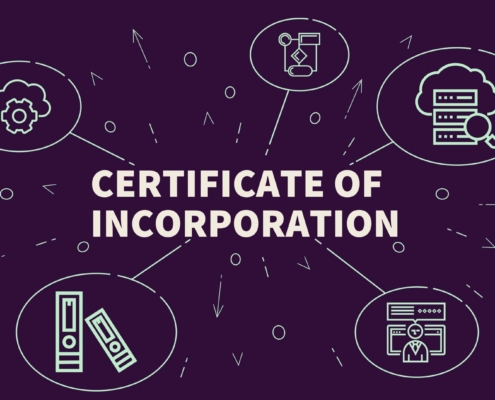Why Performance Metrics Are Important for Businesses
It is important for small business owners to keep an eye on performance metrics in order to successfully manage their business. If a business owner does not monitor these measurements, known as KPIS (key performance indicators), then he or she will not be aware of potential issues that could harm the business.
Some KPIs are more important than others, and if a business owner chooses to focus on the wrong one, then he or she will be wasting their time.
But simply knowing a company’s KPIs is not sufficient. Business intelligence means that an owner uses KPI data to make the correct decisions for his or her company.
Basically, business metrics control the growth of a business and allow an entrepreneur to focus on making the correct decisions for his or her company. Also, they can help a business owner understand whether those decisions had the impact they were supposed to.
One study revealed that up to 49% of small business owners had not identified any KPIS, and those who did were not monitoring them on a regular basis. The companies that developed and monitored KPIs were 15% more likely to achieve their growth goals.
Also, keeping track of KPIs can help a business owner avoid making mistakes. For instance, if an employee’s performance is not meeting expectations, then a business owner can address the issue. By taking immediate action, a business owner can prevent bad habits from forming while maintaining their employee retention rate. It can also help prevent a loss of revenue from poor performance.
If an employer’s staff is aware of KPI goals, then they will be motivated to meet them. By measuring KPI, a business owner has the opportunity to reward employees who meet their goals and offer training to those who do not.
What Are Five Important Business Performance Metrics?
While there are hundreds of helpful business metrics, not all of them will apply to a business. Also, irrelevant measurements can hurt company morale or reduce productivity. The question, then, is what are the important metrics for a business owner to track?
-
Employee Performance
There are a number of KPIs that can help a business owner to understand how his or her employees are performing. Some of these metrics focus on the workforce, while others focus on individuals.
It is possible to calculate revenue per employee by dividing the company’s revenue by the number of employees. Profit per employee is calculated similarly: divide the company’s profit by the number of employees. These metrics will help a business owner make sure that his or her team is not costing more than the revenue they are creating.
It is important to remember that data is only one aspect of analyzing an employee’s performance. There are also qualitative elements of an individual’s performance, such as their willingness to learn and their attitude. These elements should be addressed when providing feedback, as well as data.
-
Sales Revenues
A business’ total sales revenue is the amount of money that a company earns from selling services or goods. Some small business owners think only about profits. Net profit is calculated after subtracting taxes, manufacturing expenses, and other costs. However, it is better practice to monitor both profit and revenue.
Understanding revenue can offer valuable insights into a company. For instance, it can help a business owner figure out if sales are higher during certain parts of the year or if customers tend to purchase more on particular days.
A business owner can also calculate the profitability or profit ratio. They may do this by dividing net income by sales revenue. This amount will tell a business owner how well his or her company turns sales into profits. If a company’s profit ratio is low, then a business owner can improve it by decreasing unnecessary expenses.
-
Customer Service
Low customer satisfaction is a problem that does not just result in lost sales but can also reduce a company’s average customer lifetime.
Customers that are unhappy with their experience have been reported to tell 9 to 15 other people about their displeasure. They are also likely to leave negative reviews online, which can cause problems for a business’ reputation. This is because 93% of consumers report that reading an online review affects their decision whether to buy something.
There are a number of ways to analyze customer satisfaction. First, a business owner will want to study customer experience (CX), which measures how people feel about patronizing a company.
A brand’s CX will help determine whether employees are friendly and responsive enough when customers ask questions. It may also help determine whether it is easy for customers to make a purchase or get a refund if they need it.
Some well-known ways of measuring customer satisfaction include Net Promoter Score, Customer Satisfaction Score, and Customer Effect Score. These methods make use of surveys to study how pleased customers were after a purchase or interaction with a company.
-
Implementation of Strategies
Strategic implementation refers to how a business owner makes sure that his or her company follows strategies put in place. What is the point of a business growth strategy if no one carries it out?
There are a number of KPIs that may be considered a form of strategy implementation. The best KPI for this purpose depends on a business’ strategy.
Some strategic outcomes are hard to quantify. One example of this is customer satisfaction. That said, strategies such as NPS surveys offer data that is quantifiable.
A business owner may find it useful to separate strategic and operations KPIs. Strategic KPIs are more relevant when it comes to long-term business goals. Operational KPIs are calculated every day, such as average call handle times.
-
Cash Flow Levels
Eighty-two percent of businesses that fail cited cash flow problems as the reason. This means that tracking cash flow levels can be the difference between a business succeeding and failing.
Cash flow is a different metric than revenue. Simply knowing a company’s overall revenue does not tell an individual whether the company has enough cash on hand to handle an emergency, It also does not include how much money is invested in inventory or other non-liquid assets.
There are other KPIs that regard cash flow levels. One of the easiest is Operating Cash Flow (OCF), which measures a business’ money every day. To calculate OCF, take net income and adjust it for factors such as accounts payable – this does not qualify as cash.
Conclusion
Once a business owner decides on the KPIs that he or she wishes to measure, they need a simple way of monitoring them. If the correct systems to monitor KPIs are not in place, then it will be difficult to use these indicators to achieve one’s business goals.
A lot of business owners view KPI progress on a form of dashboard. This format offers a review of various metrics that a business owner may be keeping track of. There are plenty of business intelligence tools available to business owners that can help monitor and analyze KPIs. For instance, SimpleKPI provides dashboards that makes monitoring KPIs simple.
































